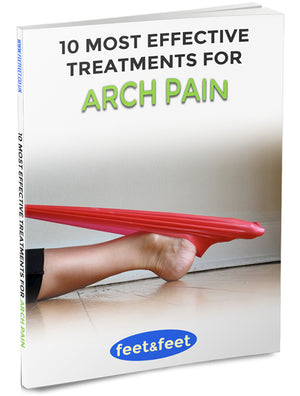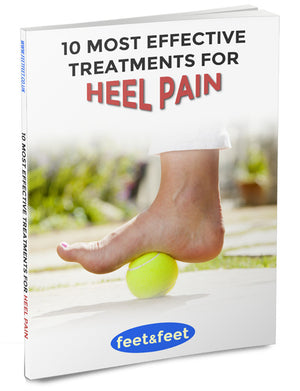What is Supination?

In the context of foot movement, supination refers to the outward roll of the foot during normal motion. When the foot supinates, the weight is borne on the outer edges of the feet.
Excessive supination (underpronation) can lead to issues such as reduced shock absorption and increased risk of ankle sprains, foot aches, and pain.
Note: The opposite of supination is overpronation - this is when the foot rolls inwards excessively with each step.
What Causes Supination?
Supination can be influenced by a variety of factors, which can be broadly categorised into anatomical, biomechanical and external influences:
Anatomical Factors
- Foot Structure – Some people have naturally high arches (pes cavus) which can predispose them to supination. The shape and structure of the foot bones can affect how weight is distributed and how the foot moves.
- Leg Length Discrepancy – A difference in leg lengths can cause one foot to supinate more to compensate for the imbalance.
Biomechanical Factors
- Muscle Imbalances – Weakness or tightness in certain muscles, particularly those of the lower leg and foot, can lead to improper foot mechanics. For instance, weak peroneal muscles (which control pronation) or tight Achilles tendons can contribute to supination.
- Joint Mobility – Limited range of motion in the ankle or subtalar joint can affect foot movement patterns, potentially leading to excessive supination.
External Influences
- Footwear – Wearing shoes that do not provide adequate support or are worn out can contribute to improper foot mechanics and lead to supination.
- Walking/Running Surface – Consistently walking or running on uneven or hard surfaces can exacerbate supination.
Other Factors
- Genetics – Some individuals may have a genetic predisposition to supination due to inherited foot structure or muscle characteristics.
- Injury – Previous injuries to the foot, ankle or leg can alter gait patterns and lead to supination as a compensatory mechanism.
Supination Symptoms
Excessive supination can lead to various symptoms and implications in different areas of the lower body. These include:
Foot and Ankle Problems
- Ankle Sprains – Due to the instability of the outward rolling motion, the ankle becomes more prone to sprains, especially on uneven surfaces.
- Plantar Fasciitis – This can also strain the plantar fascia, leading to inflammation and heel pain.
- Stress Fractures – The reduced shock absorption associated with high arches can lead to stress fractures in the bones of the feet, especially in the metatarsals.
- Heel Pain – Increased pressure on the heel can lead to heel related conditions such as heel spurs.
Knee and Leg Issues
- Iliotibial (IT) Band Syndrome – The altered gait mechanics can cause irritation and inflammation of the IT band, leading to pain outside the knee.
- Shin Splints – The abnormal distribution of forces can lead to pain and inflammation in the shin area, known as medial tibial stress syndrome.
- Patellar Tendonitis (aka. Jumpers knee) – This is when the tendon connecting the kneecap to the shinbone gets inflamed. Improper foot mechanics can exacerbate it.
Hip and Lower Back Pain
- Hip Pain – The compensatory movements and altered gait can place additional stress on the hips, leading to discomfort and pain.
- Lower Back Pain – Poor foot mechanics can cause changes in posture and movement patterns, contributing to lower back pain.
General Symptoms
- Calluses and Blisters – Excessive pressure on specific parts of the foot can lead to calluses and blisters.
- Foot Fatigue – The muscles in the feet may tire more quickly due to inefficient movement patterns.

How to Treat Supination
If supination is causing discomfort or leading to injuries, several methods of treatment can help relieve the symptoms:
- Proper Footwear – Wearing shoes with good arch support and cushioning designed for underpronators.
- Orthotics – Custom footwear orthotic insoles and inserts can help correct foot mechanics.
- Strengthening and Stretching Exercises – Targeted exercises can help address muscle imbalances and improve joint mobility.
- Physical Therapy – A physical therapist can design a comprehensive program to address muscle imbalances, improve joint mobility, and correct gait abnormalities.
Suppose you’re experiencing severe foot pain due to supination. In that case, it’s always best to seek the help of a podiatrist so they can physically assess you and provide you with the best advice for recovery.



Leave a comment